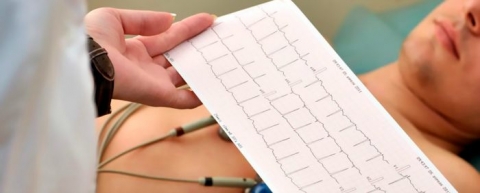Electrocardiogram (ECG)

 SDCPL offers ready to use electrocardiographs complete with the ECG, electrodes, and Office Medic Software. The portability and ease of use with QRS EKG products allows you to perform resting ECG anytime, anywhere.
SDCPL offers ready to use electrocardiographs complete with the ECG, electrodes, and Office Medic Software. The portability and ease of use with QRS EKG products allows you to perform resting ECG anytime, anywhere.
ECG stands for Electrocardiogram. ECG is a device used to record on graph paper the electrical activity of the heart. The picture is drawn by a computer from information supplied by the electrodes. It records the electrical activity of the heart. Shows the part of the heart that may be damaged, an irregular heart beat or rhythm and a decrease in supply of blood or oxygen to the heart. It can determine whether a heart attack has occurred or not. It is useful in many cardiac conditions eg: Heart attack Arrhythmias Hypertension Cardiomyopathy etc.
Your doctor uses the ECG to:
- assess your heart rhythm
- diagnose poor blood flow to the heart muscle (ischemia)
- diagnose a heart attack
- diagnose abnormalities of your heart, such as heart chamber enlargement and abnormal electrical conduction
To prepare
- Avoid oily or greasy skin creams and lotions the day of the test. They interfere with the electrode-skin contact
- Avoid full-length hosiery, as electrodes need to be placed directly on the legs.
- Wear a shirt that can be easily removed to place the leads on the chest.
What to expect
- During a resting ECG, a technician will attach 10 electrodes with adhesive pads to the skin of your chest, arms and legs. Men may have chest hair shaved to allow a better connection. You will lie flat while the computer creates a picture, on graph paper, of the electrical impulses traveling through your heart.
- It takes about 10 minutes to attach the electrodes and complete the test, but the actual recording takes only a few seconds.
- Your ECG patterns will be kept on file for comparison with future ECG recordings.
- If you have questions, ask your doctor.